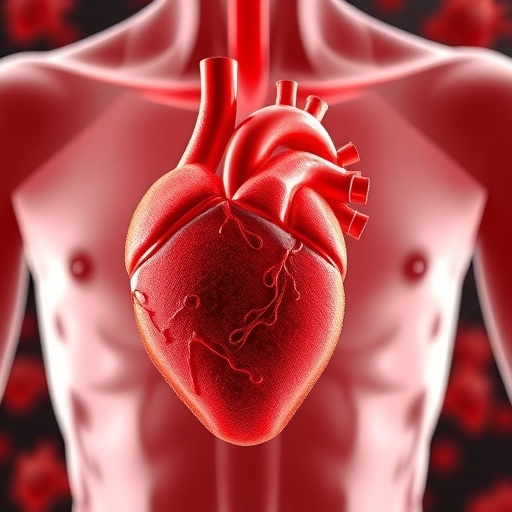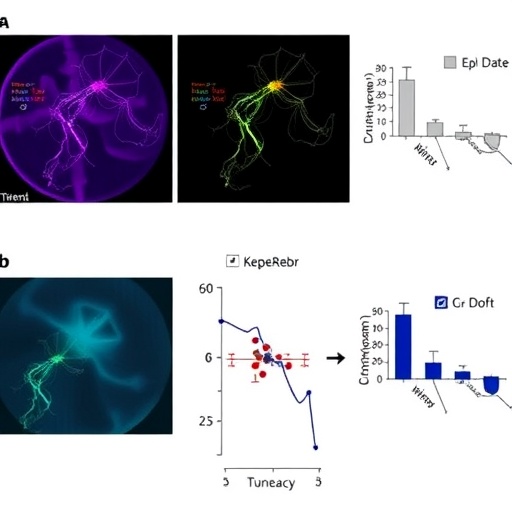In a groundbreaking new study published in Cell Death Discovery, researchers have unveiled the intricate relationship between lipid droplet biogenesis and cell fate in the context of oleic acid-induced stress in mouse cardiac endothelial cells. This research sheds new light on the cellular mechanisms that underlie cardiac endothelial cell homeostasis and the pathogenesis of ferroptosis, an iron-dependent regulated form of cell death increasingly implicated in cardiovascular diseases. The study’s findings emphasize how defective lipid droplet formation can exacerbate cellular dysfunction, potentially guiding therapeutic strategies for cardiac disease management in the future.
Lipid droplets (LDs) have long been recognized as essential organelles for lipid storage and metabolism, but their role extends far beyond mere fat reservoirs. They function dynamically to maintain cellular lipid homeostasis, buffering cells against lipotoxicity caused by excess free fatty acids. However, the study by Wang, Moura, Zuo, and colleagues reveals a crucial vulnerability in cardiac endothelial cells when lipid droplet biogenesis is impaired. By focusing on mouse cardiac endothelial cells exposed to oleic acid, a monounsaturated fatty acid prevalent in physiological and pathological contexts, the researchers demonstrate that disturbances in LD formation can precipitate a cascade of detrimental events culminating in cellular demise through ferroptosis.
One of the pivotal revelations of this study is how oleic acid overload leads to pronounced cellular homeostasis disruption in cardiac endothelial cells. Under normal conditions, excess oleic acid is esterified and sequestered safely within lipid droplets. However, when the capacity to form lipid droplets is compromised, free fatty acids accumulate in the cytosol, promoting oxidative stress and lipid peroxidation. These events disturb mitochondrial function and activate pathways associated with ferroptotic cell death, characterized by iron-dependent lipid peroxidation and cell membrane damage. This pathological process significantly impairs endothelial cell function, which is vital for cardiovascular health.
.adsslot_BAxICFaMuc{ width:728px !important; height:90px !important; }
@media (max-width:1199px) { .adsslot_BAxICFaMuc{ width:468px !important; height:60px !important; } }
@media (max-width:767px) { .adsslot_BAxICFaMuc{ width:320px !important; height:50px !important; } }
ADVERTISEMENT
The study utilized meticulous biochemical assays and imaging techniques to monitor lipid droplet formation and the progression of ferroptosis. By manipulating key genes involved in LD biogenesis pathways, the researchers were able to induce states of defective lipid droplet formation in vitro. The consequent cellular responses under oleic acid treatment clearly delineated the protective role–or lack thereof–of lipid droplets in maintaining endothelial integrity. Fluorescent staining highlighted a stark reduction in lipid droplet numbers and size in genetically or pharmacologically inhibited cells, coinciding with increased markers of ferroptotic cell death.
Intriguingly, the data suggest that lipid droplet biogenesis acts as a cellular buffer against metabolic stress instigated by free fatty acids. When this buffering capacity fails, the cells become vulnerable to ferroptosis due to rampant lipid peroxidation. This new mechanistic insight bridges two previously distinct fields: lipid homeostasis and regulated cell death pathways, underscoring the lipid droplet’s importance not simply as storage organelles but as key modulators of endothelial cell physiology and survival under stress.
The involvement of ferroptosis in cardiac pathologies is an emerging concept, and this study firmly establishes ferroptosis as a downstream consequence of defective lipid droplet biogenesis. By documenting the iron-dependent accumulation of lipid peroxides, the researchers offer potential biomarkers and intervention points for future therapeutic research. Pharmacological agents that can restore or enhance lipid droplet formation might offer a promising avenue to protect cardiac endothelial cells from oleic acid-induced lipotoxicity and ferroptosis.
In addition to utilising in vitro cell culture models, the study’s approach integrates various genetic and pharmacological tools to dissect the signaling pathways involved. This multifaceted methodology strengthens the validity of the conclusions and paves the way for further in vivo investigations. Understanding how these pathways can be modulated in animal models or patient-derived cells will be critical for translating these findings into clinical settings.
Importantly, the research highlights the delicate balance between lipid metabolism and cell survival mechanisms. The apparent paradox where accumulation of lipid droplets can be protective rather than harmful challenges preconceived notions about cellular lipid handling in cardiovascular disease. This paradigm shift points toward a refined understanding of how lipid droplets function as molecular guardians rather than mere fat deposits.
Given the increasing prevalence of metabolic disorders and their close association with cardiovascular diseases, insights from this study are timely and highly relevant. The interplay unraveled between lipid droplet dynamics and ferroptosis opens novel perspectives on how metabolic dysregulation precipitates vascular pathology. Further research building on these findings could elucidate whether similar mechanisms are at play in human cardiac endothelial cells and other vascular beds.
In conclusion, the work of Wang and colleagues advances our understanding of cardiac endothelial cell biology by illuminating the crucial role of lipid droplet biogenesis in protecting against oleic acid-induced cellular stress and ferroptotic cell death. This insight not only enriches the fundamental knowledge of cellular lipid metabolism and death pathways but also sets the stage for innovative therapeutic approaches targeting lipid droplets to mitigate endothelial dysfunction and cardiovascular disease progression.
Future directions proposed by the authors include investigating how modulation of lipid droplet formation influences endothelial responses in vivo, the role of additional fatty acid species in triggering or protecting against ferroptosis, and the exploration of combinatory therapies targeting iron metabolism and lipid droplet pathways. The integration of these findings with clinical studies could accelerate the development of drugs aimed at preserving endothelial health in metabolic and cardiovascular diseases.
This research represents a critical step forward in decoding the molecular interconnections between lipid metabolism and regulated cell death in the cardiovascular system. It underscores the vast, untapped potential of targeting intracellular lipid storage mechanisms to tackle complex diseases that currently have limited treatment options. As we await further advances, this study stands as a testament to the power of revisiting cellular organelles like lipid droplets through a new lens of disease pathogenesis and therapy.
Subject of Research: Cardiac endothelial cell lipid metabolism, lipid droplet biogenesis, oleic acid-induced cellular stress, and ferroptosis mechanisms.
Article Title: Defective lipid droplet biogenesis exacerbates oleic acid-induced cellular homeostasis disruption and ferroptosis in mouse cardiac endothelial cells.
Article References:
Wang, YT., Moura, A.K., Zuo, R. et al. Defective lipid droplet biogenesis exacerbates oleic acid-induced cellular homeostasis disruption and ferroptosis in mouse cardiac endothelial cells. Cell Death Discov. 11, 374 (2025). https://doi.org/10.1038/s41420-025-02669-5
Image Credits: AI Generated
DOI: https://doi.org/10.1038/s41420-025-02669-5
Tags: cardiac endothelial cell homeostasiscellular dysfunction and lipid metabolismferroptosis in cardiovascular diseasesimpaired lipid droplet formation effectsimplications for cardiovascular disease managementlipid droplet biogenesis in cardiac cellsmechanisms of cardiac cell deathmonounsaturated fatty acids and heart healtholeic acid-induced stress in heart cellsrelationship between lipid droplets and cell faterole of lipid droplets in cellular lipotoxicitytherapeutic strategies for heart disease





